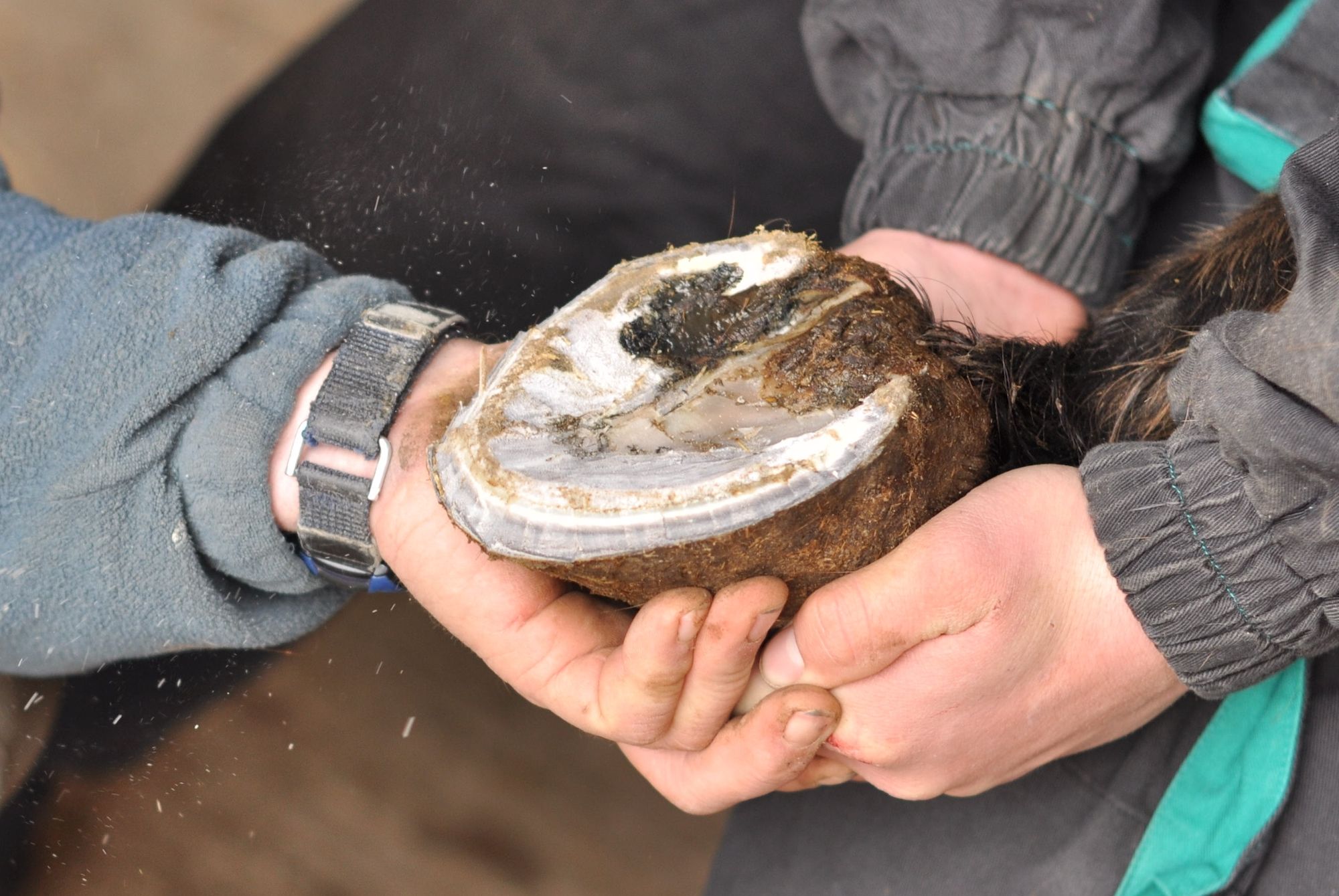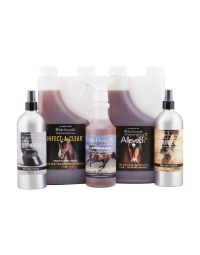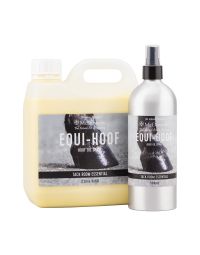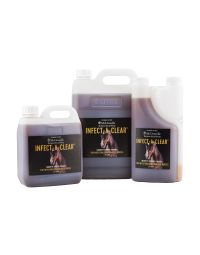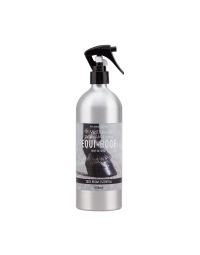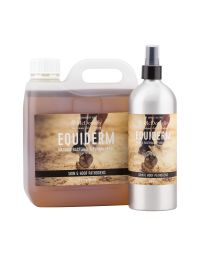Hoof health is foundational to a horse’s wellbeing - and yet conditions like thrush, white line disease, and seedy toe are common challenges, particularly in persistently wet or muddy environments.
These infections, collectively known as hoof capsule infections, often indicate a breakdown in both the hoof’s natural defences and the horse’s internal systems.
What Causes Hoof Capsule Infections?
These infections occur when bacteria or fungi penetrate the hoof capsule, often through tiny cracks, separations, or weakened hoof walls. But for pathogens to take hold, there usually needs to be a “way in” - something that compromises the integrity of the hoof in the first place.
Contributing factors include:
- Constant wet conditions, which weaken the keratin bonds in the hoof
- Poor-quality hoof growth due to nutritional imbalances
- Infrequent trimming, long toes, or imbalanced feet
- Prolonged exposure to dirty bedding or mud
- Conformation challenges that affect weight distribution and hoof wear
The impact of wet weather on hoof health
In a healthy hoof, the keratinised outer wall acts as a natural barrier to infection. But when hooves are exposed to prolonged dampness—whether from wet pasture, muddy paddocks, or soiled bedding—those keratin structures become compromised.
Water disrupts the hydrogen bonds in the hoof’s keratin layer, softening the hoof and making it more porous. While occasional moisture isn’t a problem (the bonds usually reconnect once the hoof dries out), continual wetness can prevent the hoof from ever regaining full strength. This weakened state provides an open door for bacteria and fungi to colonise the internal structures.
Symptoms to watch for;
Early detection is key. Common signs of hoof capsule infections include:
- A foul-smelling, black discharge from the hoof, often near the frog
- Sensitivity or pain when pressure is applied
- Bleeding when the area is cleaned or trimmed
- Lameness, particularly if the infection spreads deeper into the hoof
It’s important to differentiate surface infections from deeper issues such as abscesses or laminitis. Regular farrier checks and hoof inspections help ensure infections are identified early, before they escalate.
Prevention and management
- Keep Hooves Clean and Dry
- Give your horse somewhere dry to stand - even a few hours out of the mud each day can support recovery and hoof strength.
- In stabled horses, ensure bedding is clean and dry. Avoid deep, dirty shavings or straw that traps moisture and bacteria.
- Regular hoof cleaning (picking out the hooves at least once daily) and scheduled trimming are essential.
- Trimming - Long toes, flares, or imbalances increase the risk of cracks and separations where infection can enter.
- Rotating paddocks, ensuring good drainage where possible, and keeping manure under control helps reduce environmental pathogen loads.
Nutrition and Internal Support
Strong hooves start from within. Optimal hoof growth depends on a well-balanced diet rich in:
- Silica (for strong connective tissue and keratin development)
- Zinc and copper (critical trace minerals for hoof structure and integrity)
- Omega-3 fatty acids (to reduce inflammation and improve circulation)
- Equigesta-Pre to support the gut microbiota, which plays a key role in mineral absorption and immune function.
- Conditioning Tonic for horses recovering from stress or systemic imbalance, particularly after a period of poor weather or compromised immunity.
- Hoof Heel, a topical herbal formula, can help support circulation, encourage healing, and reduce inflammation in affected hooves.
- Infect-A-Clear is one McDowells formulation used to help the body eliminate metabolites and inflammatory waste, supporting natural recovery - a robust immune system can reduce the severity or frequency of infections.
Long-term strategies for recovery and prevention
If your horse has developed recurrent thrush, seedy toe, or white line disease, it's worth evaluating not only their environment, but also their overall health. In some cases, switching to a grass hay–based diet (reducing sugars and toxins from pasture or processed feeds) can reduce inflammation in the hoof and improve laminar attachment.
Consistency is key—addressing both external care and internal health gives your horse the best chance of maintaining strong, infection-resistant hooves throughout the wetter months.
McDowells Products
Our wet weather program contains five products that work together to help eliminate thrush from horses. They work internally and externally to kill the bacteria and also support the immune system and the elimination of waste. The program includes;
Midge-Away
The midgeaway spray is used directly on the areas of thrush after cleaning out the affected area. Cajeput oil is an essential oil that is steam distilled from the twigs and leaves of the cajeput tree and the paperbark tree, and is in the same family as the tea tree. It is antiseptic and analgesic and also considered an anti-inflammatory. The oil has traditionally been used to help treat minor wounds infections and some skin diseases. In addition, the Apple Cider Vinigar in the spray is also an inhibitor for thrush.
Infect-A-Clear
Infect-a-clear is used internally for hoof abscessing and mudfever. Robust immune systems routinely eliminate infective and metabolic waste as part of a healthy system. A system that is overloaded with inflammation, infection or metabolic waste has a much harder time recovering. The herbs in this mix have been traditionally used to stimulate the horse’s own natural elimination which may help to clear these naturally occurring metabolites thereby improving the immune system's response.
Alleviate
The herbs in Alleviate have traditionally been used to reduce pain from inflammation and support in the healing process. This formulation may be used safely for both emergencies and in the long term for comfort. This formulation has evolved from a consideration of the dangers of administering phenylbutazone (Bute) routinely to horses sensitive to its side effects. Traditionally White Willow Bark and Devils Claw were used for pain relief.
Equiderm
Equiderm is a topical horse spray formulated with traditional plant powered natural ingredients that contain some of nature’s most powerful antifungal, antibacterial and disinfectant properties.
Equi-hoof
Equi-hoof is a topical hoof spray formulated to encourage circulation to all tissue and bone in the area. It assists by nourishing both bones and ligament attachments, while aiding circulation dramatically, thereby assisting inflammation. It also assists to ease pain associated with Laminitis, Pedal Osteitis, Navicular Disease and Sesamoiditis.
